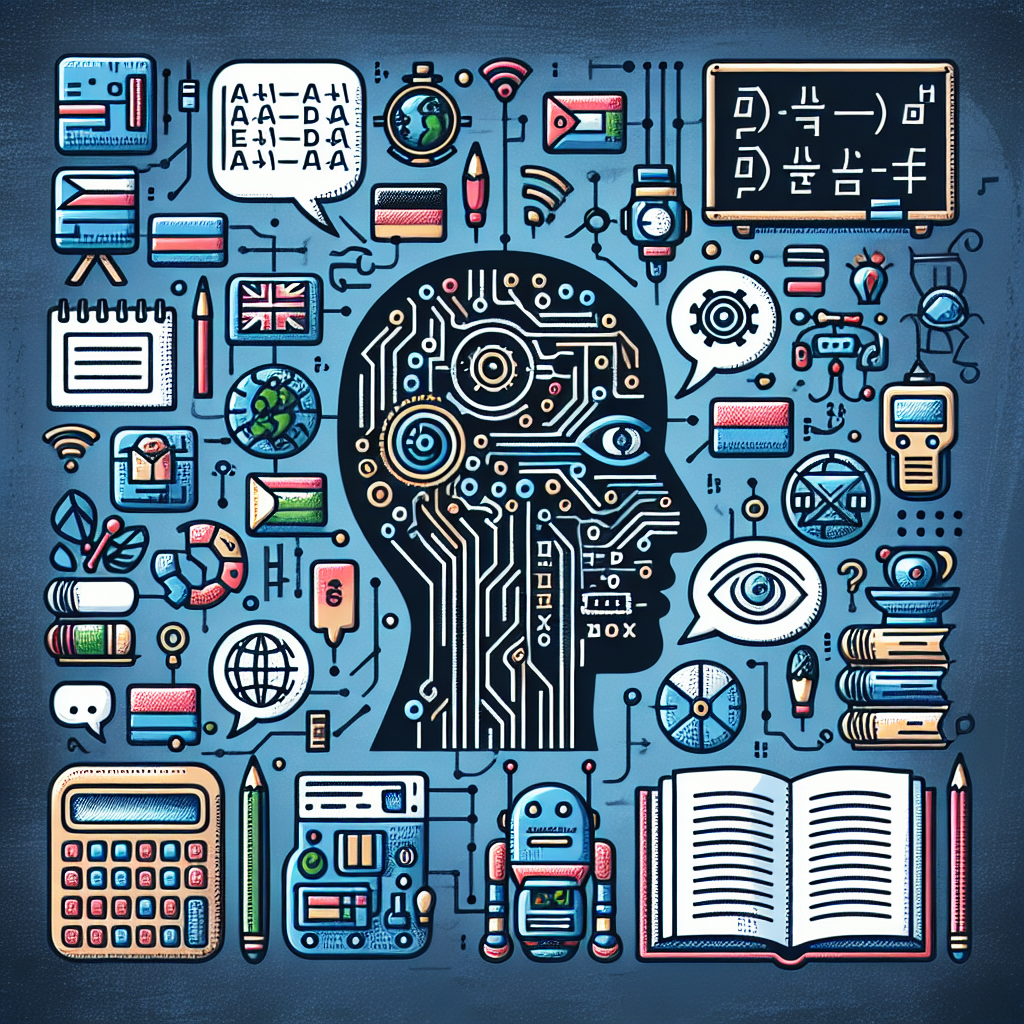In today’s interconnected world, the ability to communicate in multiple languages is becoming increasingly important. With the rise of artificial intelligence (AI) technology, there are now more opportunities than ever to break down language barriers and facilitate multilingual education. This article will explore the ways in which AI is revolutionizing language learning and how it can be used to improve multilingual education for students around the globe.
One of the key benefits of AI in multilingual education is its ability to provide personalized learning experiences for students. With the help of AI-powered language learning platforms, students can receive customized lessons and feedback based on their individual learning styles and progress. This allows students to learn at their own pace and focus on areas where they need the most improvement, ultimately leading to better outcomes in language acquisition.
Additionally, AI can be used to enhance language education through the use of virtual language tutors. These AI-driven tutors can provide students with real-time feedback and support as they practice speaking, listening, reading, and writing in a new language. By leveraging the power of AI, students can receive instant corrections and guidance on their pronunciation, grammar, and vocabulary usage, helping them to improve their language skills more quickly and effectively.
AI technology can also be used to facilitate multilingual communication in the classroom. For example, AI-powered translation tools can help students and teachers to communicate more effectively across language barriers, enabling students to participate in discussions, ask questions, and receive instruction in their native language. This can help to create a more inclusive and supportive learning environment for students from diverse linguistic backgrounds.
Furthermore, AI can be used to create immersive language learning experiences through the use of virtual reality (VR) and augmented reality (AR) technology. By combining AI with VR and AR, students can engage in interactive language exercises, simulations, and role-playing scenarios that provide a more engaging and realistic learning experience. This can help students to develop their language skills in a more authentic and meaningful way, leading to greater retention and fluency in the target language.
In addition to its benefits for students, AI can also help teachers to improve their language instruction and assessment practices. AI-powered tools can assist teachers in creating more engaging and interactive lessons, providing them with real-time data on student performance, and automating routine tasks such as grading and feedback. This can help teachers to save time and resources, allowing them to focus on delivering high-quality instruction and support to their students.
Overall, AI has the potential to revolutionize multilingual education by breaking down language barriers, providing personalized learning experiences, facilitating communication, and creating immersive learning environments. By harnessing the power of AI, educators can empower students to develop their language skills more effectively and efficiently, preparing them for success in an increasingly globalized world.
FAQs:
1. How can AI help students learn multiple languages at the same time?
AI can help students learn multiple languages simultaneously by providing personalized learning experiences, virtual language tutors, and immersive language learning experiences. By leveraging AI-powered tools and platforms, students can receive customized lessons and feedback in multiple languages, practice speaking and listening with virtual tutors, and engage in interactive language exercises using VR and AR technology.
2. Can AI-powered translation tools replace human language teachers?
While AI-powered translation tools can be a valuable resource for facilitating multilingual communication in the classroom, they cannot fully replace human language teachers. Human teachers provide students with personalized instruction, feedback, and support that AI technology cannot replicate. However, AI can complement the work of teachers by providing additional resources and support to enhance language learning experiences for students.
3. How can AI help teachers improve their language instruction practices?
AI can help teachers improve their language instruction practices by providing them with real-time data on student performance, automating routine tasks such as grading and feedback, and offering insights and recommendations for improving instruction. By leveraging AI-powered tools, teachers can save time and resources, enhance their teaching effectiveness, and provide more engaging and interactive language lessons for their students.
4. What are the challenges of using AI in multilingual education?
Some of the challenges of using AI in multilingual education include the need for access to reliable technology and internet connectivity, concerns about data privacy and security, and the potential for bias in AI algorithms. Additionally, there may be challenges related to the integration of AI technology into existing educational systems and practices, as well as the need for ongoing professional development and training for teachers to effectively use AI tools in the classroom.

